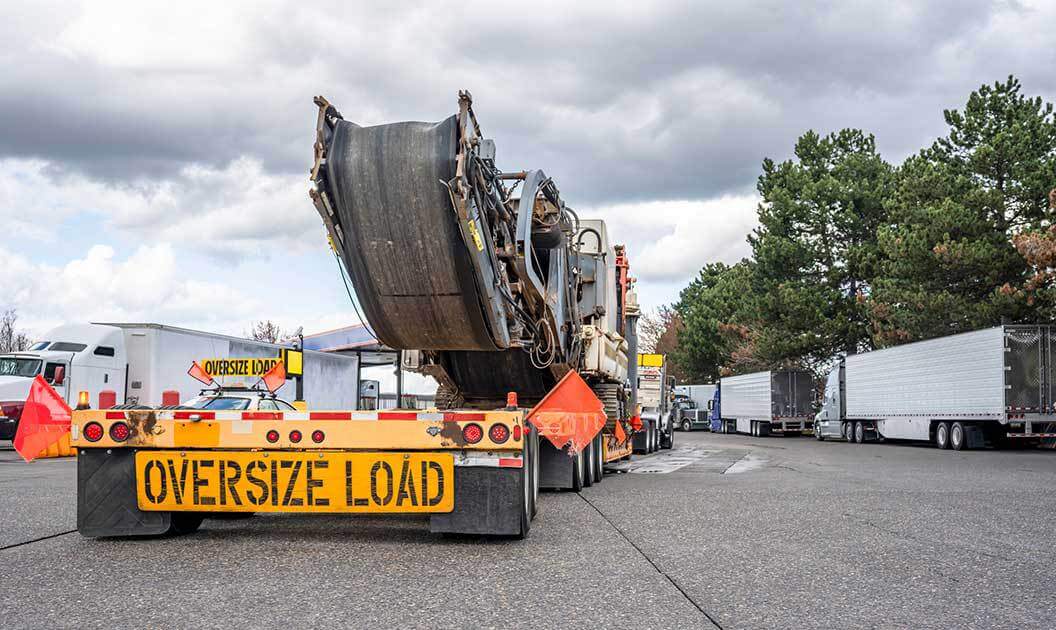
Out of gauge cargo shipping is the service you’ll need when you have freight that exceeds the dimensions of a 20’ to 40’ container. This shipping service isn’t as commonly used as standard forms of shipping. If you don’t have experience shipping out of gauge cargo, then you should know what to expect and what you should do to prepare before using this service.
Out of gauge cargo shipping requires arduous amounts of planning and the help of skilled professionals to load and unload your freight. This form of freight service will also cost more than shipping standard freight. Lastly, out of gauge cargo can only be transported using flat racks, open-top or platform containers.
Out of gauge cargo shipping is a hassle to plan. As a 3PL provider, we can provide the knowledge and guidance you need to successfully ship these types of massive shipments.
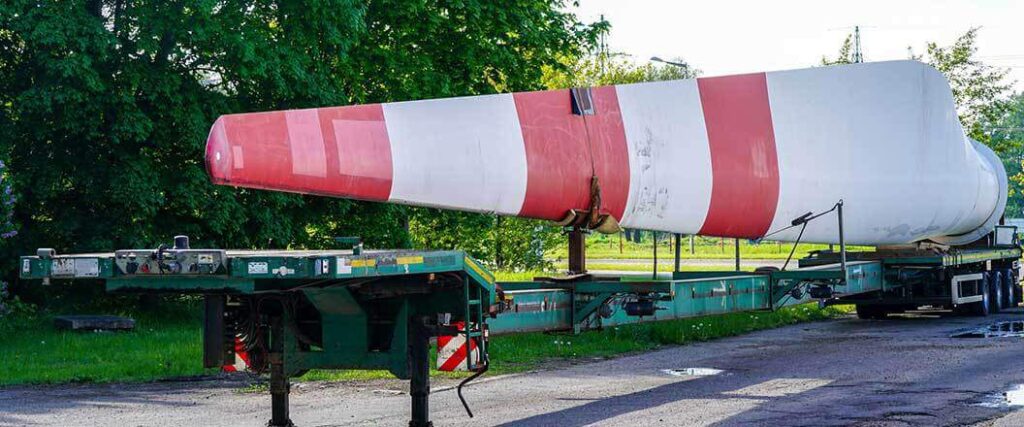
Out of gauge cargo is used to describe freight that is unable to fit in a normal 20’ to 40’ shipping container. Cargo with these proportions can exceed the normal cargo container’s height, length, width or some combination of all of them.
Since out of gauge cargo is defined by its size rather than a specific commodity, all kinds of different cargo could constitute this category of cargo. Some examples are:
Out of gauge cargo is sometimes referred to as AILs or abnormally shaped invisible loads. Regardless of what you call it, shipping cargo with large dimensions and weight calls for specialized equipment to be used for it to be transported.
If you want to learn more about the other types of goods transported by sea, look into our article about the topic.
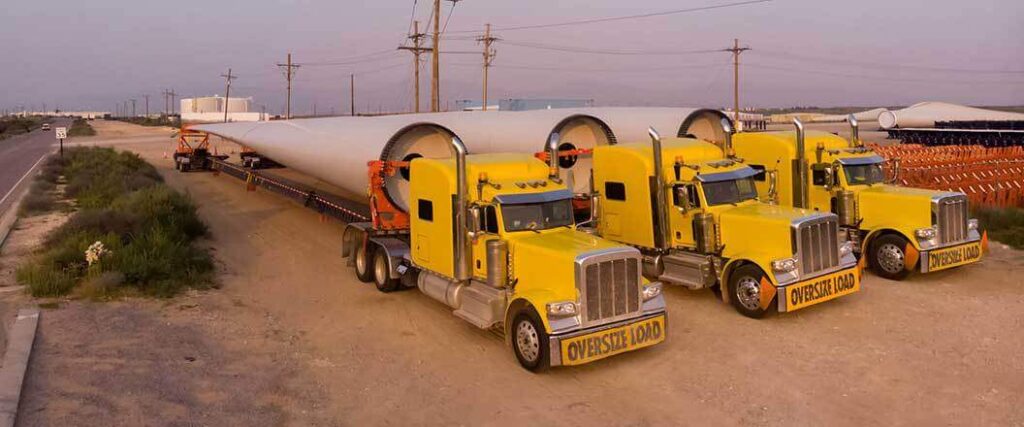
To carry an out of gauge cargo shipment, you will need to consider a few factors. For one, this form of freight service will cost you more than shipping standard cargo. You will also need to plan the route your shipment will travel and require the skill of professionals that can load or unload your freight.
There are many extra costs that you will incur when you transport oversized cargo. For example, the top of a standard cargo container will need to be removed so that oversized cargo can fit inside it. Unfortunately, doing this will cost you money to have done.
In some instances, the extremely large dimensions of the OOG cargo will take up space on the vessel transporting it overseas. There are also the fees that marine terminals and RORO terminals will charge you for handling this type of cargo.
There are also the costs you will incur when you transport OOG cargo by land. Once it’s off the boat and loaded onto a truck, your shipment will be considered an oversized load. Transporting these types of loads will require special permits.
Additionally, not every state has the same oversized load requirements. Therefore, you’ll have to pay for the oversized load permits for each state your cargo passes through. Some states even require that oversized loads be accompanied by escort vehicles, which is another additional cost you’ll need to cover.
The equipment that’s needed to transport the OOG cargo will also need to be returned. That mean your carrier will have to be paid for a round trip. All of these factors will make OOG cargo shipping more expensive than standard shipping rates. When you’re dealing with OOG shipping, you can expect to spend $250 to $500 more than you would for regular shipments.
There’s a good deal of planning that needs to be done to transport an OOG shipment. When you transport an OOG shipment overland, you’re going to have to find routes where your cargo be hauled that won’t have any obstructions.
This means that routes to a destination cannot have bridges with low clearance or go down roads with sharp turns. Hazards like these can be dangerous for a truck driver to navigate with such a large shipment.
There’s also the trouble of finding a trucker or trucking company that will be able to transport OOG cargo for you. At R+L Global Logistics, we work alongside multiple carriers that perform all kinds of freight shipments, including OOG cargo. Fill out your quote for an affordable rate and quick pick-up.

Finally, transporting an OOG shipment requires the skills of qualified personnel and the right equipment. We’ve already discussed finding a truck driver to move your shipment, but you’ll also need the help of personnel that can unload and load your freight at the desired destination.
You may also need the assistance of an engineer to draw out some technical diagrams of your OOG cargo. This will better detail the dimensions of the cargo so that when it’s time to load it, the crane operator will know where the center of gravity is for the freight.
A project cargo specialist will also be helpful during the planning process of your shipment. They can find different personnel that will be able to perform the different functions required for a successful OOG shipment.
Having the right equipment for the job will also be necessary. Besides the container your cargo will be shipped in, you’ll need other equipment like straps and chains to secure your cargo.
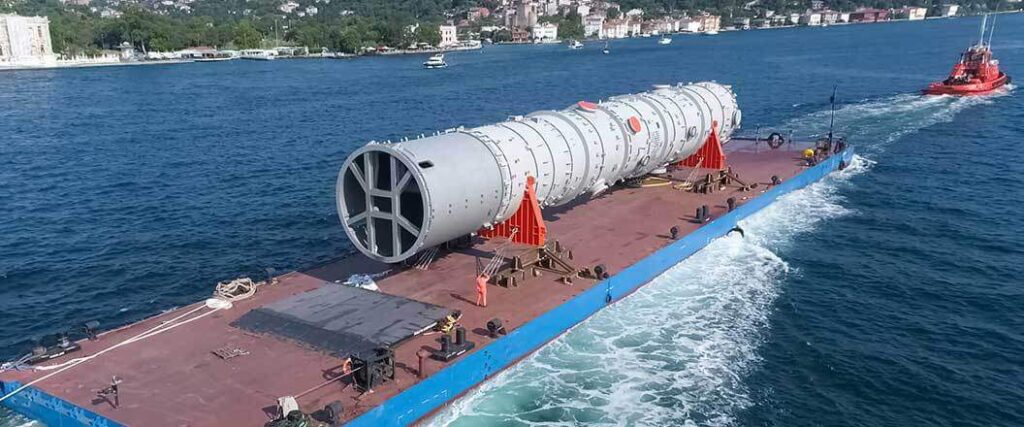
When Out of Gauge Cargo is transported, it’s moved using a variety of different methods. The method that best suits you all comes down to the size of your OOG cargo.
Open tops containers are commonly used to transport OOG cargo to and from its destination. The open-top container is essentially the same as a regular container, except that the top of the container has been removed.
This type of container is the best one to use when your OOG cargo exceeds the height dimensions of a cargo container. Since the cargo can’t be put into the container from any of the side doors, it’s instead lifted by a crane and lowered into it.
One of the greatest aspects of a flat rack is that it’s more flexible than an open-top container. Flat racks are open from the top like an open top container but are also open from the sides. The walls at the front and back of the flat rack are collapsable as well.
Despite these benefits, there are a few downsides that you should be aware of when using this piece of equipment to transport your OOG cargo. For one, all of these openings on the flack rack expose your cargo to the elements. Therefore, you might need to use tarps or even shrink wrap to give your cargo the protection that it needs from any weather it will travel through.
Flat racks will cost more than open-top containers. Due to these extra costs, only use flat racks when you have an OOG shipment that exceeds both height and width requirements.
Another thing you will need to consider when you use a flat rack is the regulations from the National Cargo Bureau (NCB). The NCB holds routine inspections for cargo transported in a flat rack. The inspection will go over things like:
Platform containers are cargo containers with no walls or a top. They’re quite literally platforms that cargo can be secured to. Their lengths are 20 to 40 feet like normal containers. Since they don’t have any walls, platform containers are great when for freight that is not only wide but also extremely tall.
When OOG cargo is transported by land in either a flat rack, open top or platform container, it’s going to be transported using a flatbed trailer. These types of trailers are used anytime an oversized shipment needs to be transported.
One of the benefits of using flatbed trailers is that they come in all kinds of different lengths and some have one or two decks. This provides your cargo more flexibility because your cargo will be fitted to a trailer best suited for it.
When a flatbed trailer is used to transport OOG cargo, it will have either an open-top container, flat rack or platform container secured to its bed.
Vessel charters are one of the options that you can take when you’re transporting freight over the ocean. Onboard a vessel charter, your OOG cargo will share the vessel with other containers.
Since OOG shipments have large dimensions, they may take up space for other containers. Another problem that might occur is that OOG cargo inside an open-top container won’t be able to have other containers stacked on top of it.
To rectify this, your OOG shipment will either be stacked at the very top of other cargo containers or it will be placed below the deck of the ship.
RORO (roll-on roll-off) services are a great service to use if your OOG shipment is a wheeled vehicle. This type of service is similar to what using a vessel charter is like.
The only difference is that instead of your shipment being loaded and unloaded with a crane, it can be driven on and off the ship via a ramp. Since your shipment can be driven on and off the vessel, it won’t need to be placed into an open-top container or flat rack.
Vessels that provide this type of service have ramps that are specially built for vehicles to drive on and off the dock. These vessels provide plenty of room for your vehicle to be stored during its journey as well.
When your vehicle is parked in its designated spot aboard the vessel, it’s secured with blockers, braces and ties so that it’s not rolling around are bumping into anything. Vessels that provide this service keep the cargo area where the vehicles are kept enclosed. This protects your vehicles from the elements.
If need be, you could use an aircraft charter to transport your OOG cargo. The benefit of air travel is that transit times will be cut down exponentially. You can also move more considerable volumes of freight using this method as well.
The problem with aircraft is only so big, which means there’s only so much room for large cargo. While OOG cargo can be placed into a plane, the dimensions of your cargo can’t be too excessive.

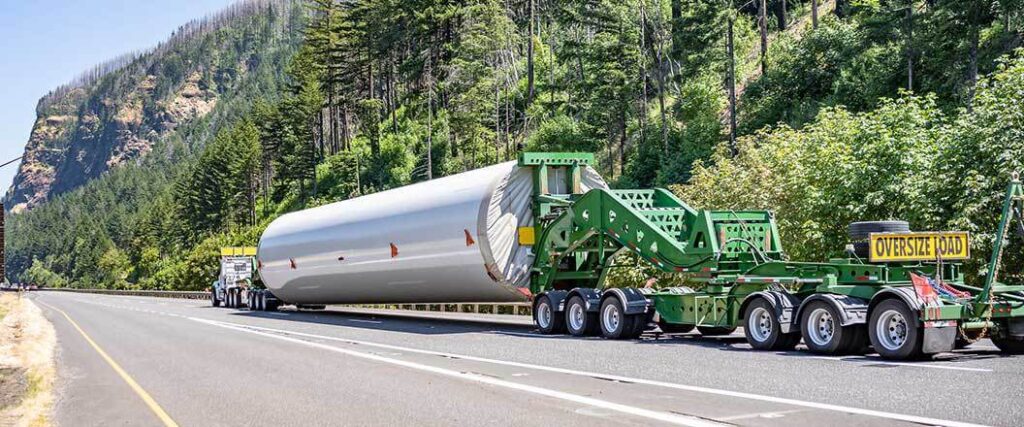
When you’re ready to ship your out of gauge cargo, you should strongly consider hiring a freight forwarder. The reason a freight forwarder is a great person to hire when you’re shipping out of gauge cargo is that they have numerous partners throughout the supply chain that can get your freight where it needs to go.
The first step of the shipping journey for OOG cargo is the loading process. Oftentimes, this will occur at the location the cargo needs to be picked up. OOG cargo can be loaded onto a flatbed trailer with either a forklift or a crane.
Typically, cranes are used to load open-top containers with OOG cargo. Since the top is the only entry point, cranes are the only option since they can lower the freight into the container.
Flat racks are often loaded using forklifts. Flat racks lack any sidewall which makes them easier to load with a forklift. Likewise, platform containers can be loaded with both forklifts and cranes.
Once loaded, the transportation process begins. During transport, goods will need to travel a safe route to accommodate the cargo. Knowing where you’ll pick up your goods and destination will help you or your logistics provider plan the route your freight will have to travel.
In addition to utilizing an appropriate route for your cargo, all of the necessary equipment will be used during the transport part of the shipping process. This includes equipment such as the containers that will hold your freight, to the multi-axle trailers that the cargo will rest on during the journey. Necessary oversized load papers will have to be obtained for this part of the process as well.
The delivery part of the OOG cargo shipping process is much more simple than the other aspects of the process. Once at the destination, the freight will be handed off to the dockworkers at the port.
Keep in mind that some terminals have certain operating hours that you will be able to drop off cargo during. Therefore, you need to plan your drop-offs accordingly. You will also need to make sure that your freight.
If your import OOG cargo, it will be delivered to the final destination. The final destination will either be at your place of business or to the customer. Regardless of which, the delivery is the last part of the importing process you’ll need to worry about.
When the OOG cargo arrives at the port, cargo handlers and terminal operators will proceed with the inspection of your cargo. If the cargo that you sent does not meet any of the regulations that it’s graded by, your shipment will be sent back to you. If this happens, the cargo will have to be reworked.
Doing this will cost you time and burn more of your money. Some of the regulations can include the NCB’s standards for flat rack shipments. Another regulation to be aware of is the Convention for Safe Containers 1972 (CSC 1972). All shipping containers are used for international shipments.
To comply with this regulation, you will need the CSC plate to accompany the container your shipment is in. The CSC plate must contain the following information:
There are two types of inspections that are applied to CSC plates. The first is the Periodic Examination Scheme (PES) and the second is the Approved Continuous Examination Scheme (APEC).
Depending on the cargo itself, you may have to adhere to the customs guidelines of federal agencies that regulate the cargo you’re shipping.
If your cargo successfully passes all regulations, it can begin to be unloaded. Trucks are unloaded at ports with the use of heavy-duty forklifts. The forklifts then stack the freight on top of other containers.
Because of the odd dimensions of OOG cargo, it’s loaded on top of standard cargo containers. In some cases, OOG cargo takes up more space than regular cargo containers if it’s placed on the ground. This leaves less room for standard containers to be stacked around it.
An OOG shipment will wait in the yard until it can be loaded onto a cargo ship. To do this, dockworkers use a heavy-duty forklift to lower the container onto a utility tractor rig or UTR. Then, the UTR takes the container to the dock where a crane lifts the cargo off the UTR and stacks it on the cargo ship.
At USA Freight Forwarding Services, we specialize in the transfer of goods from one country to the other. Not only that, but we make shipping affordable for all of our customers. Thanks to our connections throughout the supply chain, we’re able to negotiate rates that are cheaper for our customers compared to other forwarders.
We offer a few different services to shippers of international freight. These services include:
If you’re ready to ship your goods, look into these services or schedule your consulting session. Our team at USA Freight Forwarding Services can also at (866) 941-8081 if you have any questions or concerns.
